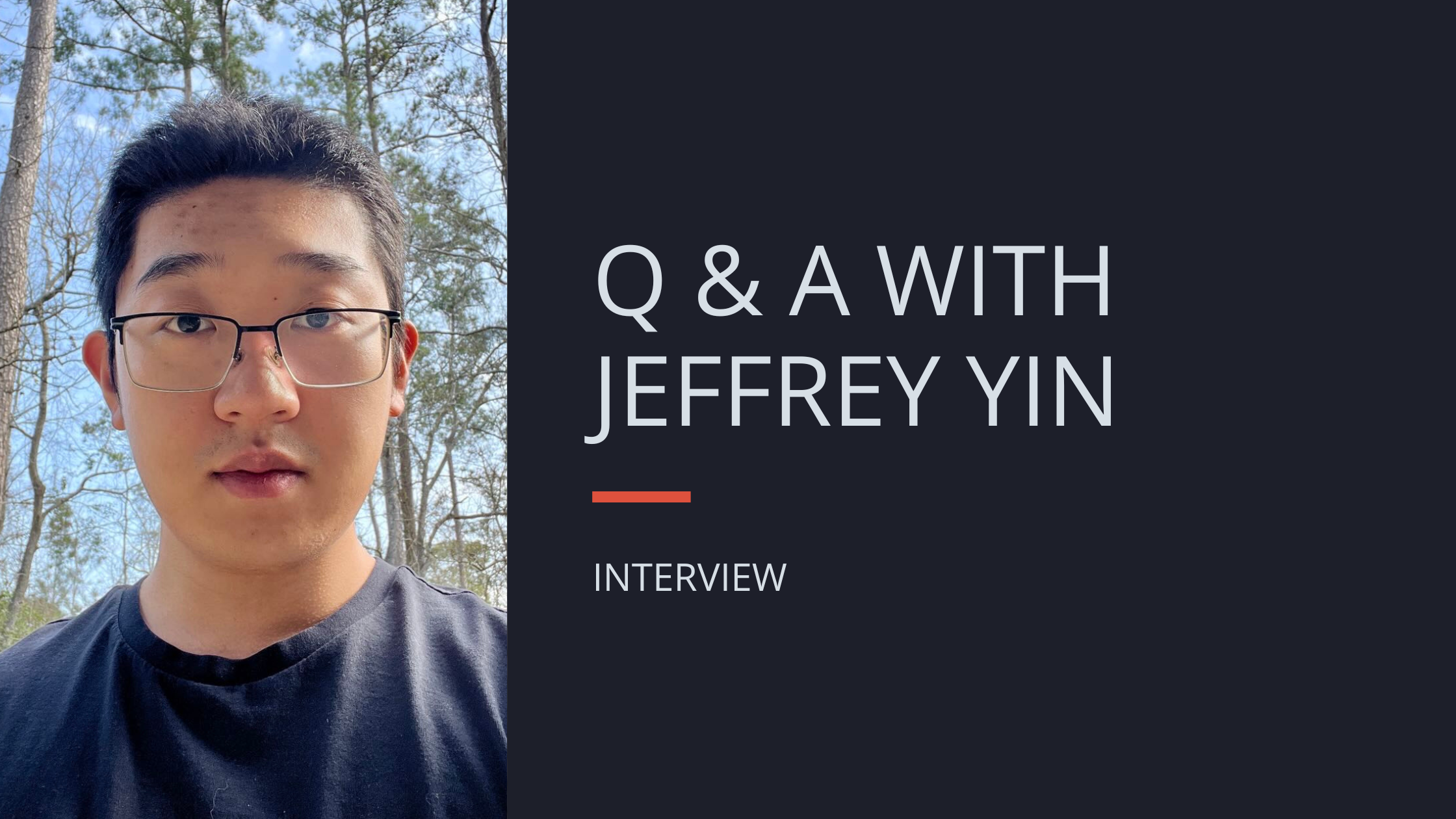
Q and A with Jeffrey Yin of SJY Audio
Jeffrey Yin Talks SJY Horizon Closed Carbon
Tom at Apos here. Some people get into high-end audio because they’re chasing that last half-percent of sonic perfection. Others simply want headphones that don’t make a grand piano sound like it was recorded through a drive-thru intercom. And then there’s Jeffrey Yin, founder of SJY Audio, who looked at the industry and said, “Watch this.”
In this Q&A, we chat with Jeffrey on why he started making headphones, how he landed on forged carbon fiber for the ear cups, and why the Horizon Closed Carbon’s rectangular drivers give it an acoustic edge. There's a method to his madness—and about 60 driver iterations to prove it.
Q: Why headphones? What initially sparked your interest?
A: I've always had a deep passion for music and playing instruments. After getting into the high-end audio community I began wanting to create headphones that allow me to achieve a greater sense of connection and relaxation through music.
Q: What sort of music do you like listening to?
A: I listen to all kinds of music from different countries to get a sense of what people enjoy and how well the headphones handle various tracks.
Q: Okay what about test tracks? What are your favorites?
A: My go to tracks are “Glasshouse” by Julia Church, “Keep Your Fire Burning” by Mao Abe, “Light On” by Maggie Rogers, and “Nestling” by KIRINJI.
Q: Let’s talk about the Horizon Closed Carbon. What goals did you have in mind when you set out to create it? Did those goals evolve or change over time?
A: My goal with the Closed Carbon was to design a neutral-sounding headphone that remains fun and enjoyable to listen to. I wanted to overcome the common issue with closed-back headphones, where the music often feels compressed, and instead focus on delivering a more open and engaging experience. The aim was to create a headphone that offers an enjoyable listening experience regardless of the closed-back form factor, with tuning specifically optimized to achieve this balance.
 Driver baffle iterations from oldest (leftmost) to final (rightmost). Each revision represents 10+ smaller revisions.
Driver baffle iterations from oldest (leftmost) to final (rightmost). Each revision represents 10+ smaller revisions.
Q: Did that goal also inspire you to use planar magnetic drivers?
A: I chose planar magnetic drivers because of their ability to deliver exceptional detail, speed, and accuracy, which are essential for achieving the neutral yet enjoyable sound signature I envisioned. They also provide an unparalleled opportunity for creating unique driver designs that simply aren't possible with traditional dynamic drivers, allowing for greater innovation and fine-tuning.
Q: Speaking of unique, let’s talk about some of the material choices you used. Can you explain what drove the choice for the carbon fiber ear cups?
A: Carbon fiber ear cups offer low weight, high rigidity, and excellent damping properties, reducing resonances and enhancing tuning while adding a bold, distinctive look.
Q: I’ve never seen the “brushstroke pattern” you use. How did you achieve it?
A: Forged carbon fiber is a composite material made by compressing short, randomly oriented carbon fiber strands with a resin matrix under heat and pressure. This process uses chopped fibers, resulting in a material with a distinctive “brushstroke” marbled aesthetic.
 The "brushstroke" pattern is a natural outcome of forged carbon fiber production.
The "brushstroke" pattern is a natural outcome of forged carbon fiber production.
Q: Oh that’s really cool. So this brushstroke pattern is the natural look of carbon fiber?
A: Yep!
Q: Does carbon fiber affect the sound at all?
A: Forged carbon fiber’s random orientation tends to dampen vibrations more evenly across a wider frequency range. This leads to lower resonance peaks.
Q: That’s fascinating. Is using randomly-oriented carbon fiber strands similar in concept to using a sound deflector panel in a listening room?
A: Carbon fiber composites, especially those with a resin matrix, can have good internal damping, reducing unwanted resonances and vibrations, while sound panels scatter sound waves, preventing harsh reflections or standing waves in a room.
Q: Gotcha. I noticed that the carbon fiber ear cups are slightly angled. Is there a reason for this besides aesthetics?
A: The angling of the carbon fiber cups is designed to redirect internal reflections away from the driver.
Q: That’s awesome. How does this influence the overall sound?
A: Using angled surfaces can help redirect sound waves to prevent standing waves and unwanted resonances that could result in cancellation.
Q: The rectangular shape of the cups is pretty uncommon in the world of headphones. What drove the choice to make the drivers and cups rectangular?
A: The shape provides a distinctive, modern/retro look that sets the Closed Carbon apart from traditional headphone designs. While less common, the rectangular form was carefully chosen to balance acoustic performance with a unique visual identity.
Q: Can you talk more about that—how the rectangular shape balances acoustic performance?
A: The rectangular shape is designed to complement the rectangular driver that has a proprietary tuning system that can fine tune each frequency range.
Q: So without the rectangular shape, you wouldn’t have achieved the sound profile you were after?
A: Exactly.
 The rectangular cups perfectly complement the driver's unique architecture.
The rectangular cups perfectly complement the driver's unique architecture.
Q: Let’s move on to some of the other materials like the CNC aluminum frame and leather headband. How do these materials benefit performance and aesthetics?
A: The Closed Carbon's material choices were driven by a balance of performance, durability, and aesthetics. The CNC aluminum frame provides strength, precision, and lightweight comfort while minimizing vibrations for accurate sound. The leather headband ensures long-lasting comfort and even weight distribution.
Q: What did the process of choosing these materials look like? Did you order various leather types, for instance, and try them out in person before deciding on the top-grain leather that’s in the final version?
A: I aim for the best quality of material that can be used on headphones. I have tried various types of materials for the headband but none has the lasting quality of top-grain leather.
 " Nothing has the quality of top-grain leather."
" Nothing has the quality of top-grain leather."
Q: The Closed Carbon strikes a wonderful balance between high-end materials and a relatively low weight. It might not be as light as plastic headphones, but it’s certainly more durable than them. How important was the final weight of the headphone to you in the design and iteration process? Was striking this balance between low weight and quality materials difficult?
A: The weight of the Closed Carbon was balanced to ensure comfort without compromising durability. While the use of carbon fiber helped reduce the overall weight, the inclusion of metal components added necessary strength and stability. My goal was to create a product that is both durable and comfortable
Q: What was your goal for the tuning of these headphones? Who, at the end of the day, is the tuning made for? Maybe a better way of asking this question is: who will be most delighted by the tuning of this headphone?
A: The tuning is designed for anyone seeking a neutral yet engaging sound. It delivers a balanced and natural presentation while maintaining an immersive listening experience. These headphones are ideal for those who want to enjoy their music in isolation from external noise while still retaining a sense of openness and spaciousness in the sound.
Q: What amps or DAC setups do you find really highlight the headphone’s strengths?
A: The headphones will work very well with solid state amps or tube hybrids with a R2R DAC.
Q: How many iterations of the headphone did you make?
A: The headphone has gone through 30 iterations with each iteration adding small improvements. The driver has gone through 60 iterations with different trace and magnetic designs. Each component of the headphone has gone through different iterations to ensure the coherence between each component.
Q: Sixty!? Is that normal?
A: Quality takes time.
 At long last, the final driver design.
At long last, the final driver design.
Q: Well, you certainly achieved it. Are there any upcoming projects you’re excited to pursue next for SJY Audio?
A: I’m currently working on some exciting projects that will bring something truly unique to the community, and I can’t wait to share them soon.
Q: Let’s say someone is considering buying their first planar magnetic headphone. What would you tell them about the Horizon Closed Carbon experience?
A: The headphone will deliver a great experience with all music genres and be used for all occasions.
Q: The confidence! We love it.
The SJY Horizon Closed Carbon is available for purchase on Apos.


